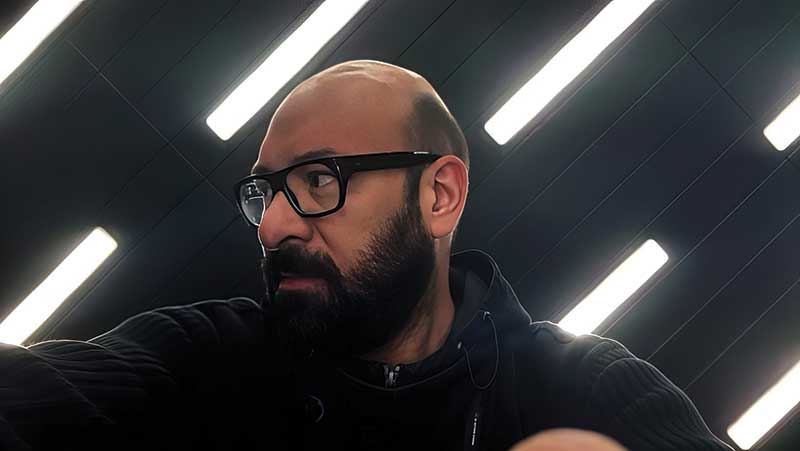
del Campo Embraces Collaboration between AI and Architecture
Matias del Campo made productive use of his time when COVID put some of his projects on hold, writing one of the first books on the use of artificial intelligence in architecture. As an associate professor at Taubman College and founder of the Architecture and Artificial Intelligence Laboratory, launched in January 2021, he’s considered a pioneer in bringing AI to the practice of architecture.
AI is “changing the design processes. It’s going to very likely change how we build.” He explains that AI lets architects harness the power of data to enhance the way they design spaces. The vast amounts of information gathered through AI can help architects to improve the planning of spatial layouts as much as the structural properties and aesthetics of their designs.
His book Neural Architecture: Design and Artificial Intelligence (ORO Editions, 2022), features several examples of how to use AI in architecture and discusses the cultural, political, and economic implications that architects need to consider as they use these new methods. He also explores how to address the fundamental shifts that AI will create. For example, if AI-assisted robots are used on construction sites, what happens to those who currently work on those sites?
“There’s a huge political implication,” he said. “Do we introduce universal basic income,” so working on the construction site isn’t necessary? Or should it become a collaboration between humans and machines?
Another major issue posed by the use of AI is how much agency architects have over their projects and the implications for copyrights. AI holds the possibility of entirely shifting the traditional concept of top-down architecture design methods. He suggests that there’s merit in moving away from the idea of the “architect as the genius who makes a napkin sketch that magically transforms into a built project.” Architecture, del Campo says, doesn’t operate that way; it’s a collaborative process.
“Now the question is: Do we open up to the idea that AI becomes a collaborator rather than thinking of it just as a tool?” He believes architects should view AI as helping to expand their creativity — harnessing the power of data to make better architecture. Though the ultimate decision will remain with the architect, the advantage of AI is that it will provide hundreds of variations of plans in minutes, giving the architect far more choices in a short time.
Del Campo hopes his book will be pathbreaking in providing information on the opportunities that AI provides. Many, he said, view it just as a basic technology tool for architects. But he points out that AI is pervasive in everyday life, including the way that Amazon learns to recommend books for you based on your previous purchases. This technology “is so global, in terms of how it infuses so many parts of our life,” he said. “It has become an integral part of how we design and how we make art and how we make music even without us noticing. It is deeply ingrained in our contemporary age.”
This summer, del Campo began working on a project with the University of Michigan Robotics team to evaluate the use of machine vision for demolition at construction sites to allow the easy separation of materials for reuse. Separating materials like glass and concrete is a time- and labor-intensive process, and training a robot to separate the material would be far more affordable. He sees this as particularly advantageous in reducing the amount of waste generated during the lifecycle of a building. Speeding up the process and reducing the cost could help ensure that AI-driven building recycling would be widely used, he said.
Del Campo continues to encounter long-held skepticism and widespread suspicion of the tool from fellow architects. He believes that’s motivated by the fear that machines will displace humans. “They’re afraid they’re going to be out of a job or become obsolete or that they’re too old to get up to speed with technology”— none of which del Campo feels is true. He hopes more architects embrace AI instead of pushing it away since it can be a huge asset to the field.
“It is a train in motion,” he said. “If we as architects do not engage with this paradigm shift, somebody else will do it for us, robbing architecture of the opportunity to shape the trajectory that this development will take — and thus the impact it will have for the discipline.”
– Julie Halpert









